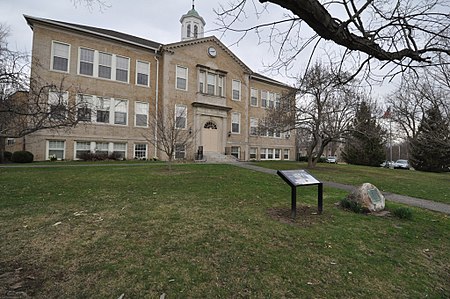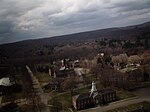Camps Nos. 10 and 41 of Rochambeau's Army
Archaeological sites in Fairfield County, ConnecticutHistoric places on the Washington–Rochambeau Revolutionary RouteMilitary facilities on the National Register of Historic Places in ConnecticutNewtown, Connecticut

Camps Nos. 10 and 41 of Rochambeau's Army, also known as Site No. 97-87D, is an historical archeological site that was listed on the National Register of Historic Places in 2002. It encompasses the areas occupied by the French Army of Rochambeau during their marches across Connecticut in 1781 and 1783. One of the major encampment site is located on the grounds of the Hawley School, where a historic marker is placed.
Excerpt from the Wikipedia article Camps Nos. 10 and 41 of Rochambeau's Army (License: CC BY-SA 3.0, Authors, Images).Camps Nos. 10 and 41 of Rochambeau's Army
The Boulevard,
Geographical coordinates (GPS) Address Nearby Places Show on map
Geographical coordinates (GPS)
| Latitude | Longitude |
|---|---|
| N 41.414722222222 ° | E -73.302222222222 ° |
Address
Hawley School
The Boulevard
06470 (Newtown)
Connecticut, United States
Open on Google Maps









